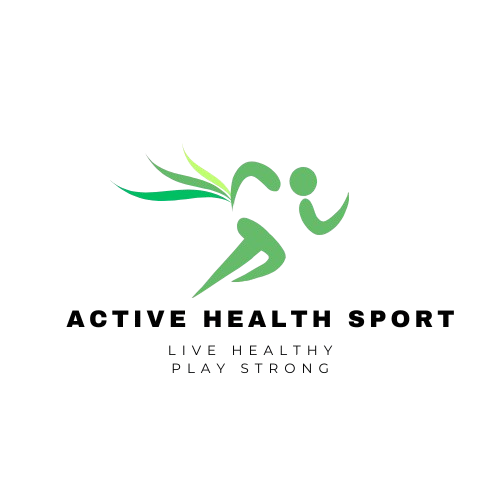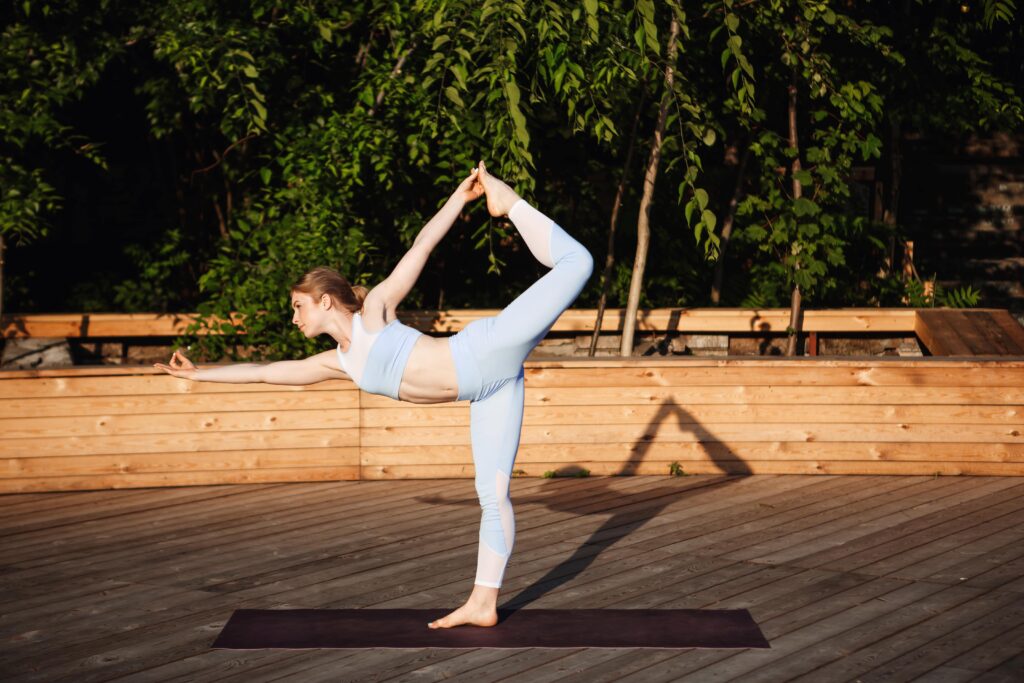Yoga has often been associated with mats, studios, and complex postures that require flexibility or balance. But the truth is, yoga-inspired stretching is not confined to a mat, and it offers benefits that extend far beyond traditional practice.
From walking up the stairs to bending down to tie your shoes, mobility plays a central role in daily life. And at any age, integrating yoga-inspired stretches into your routine can significantly improve how you move, how you feel, and how you age gracefully.
Understanding Mobility and Its Importance in this Era
Mobility refers to the ability of your joints and muscles to move freely and comfortably through their full range of motion. Unlike flexibility, which is the length of a muscle, mobility combines muscle flexibility, joint health, strength, and coordination.
A person may be flexible but still struggle with mobility if their joints are stiff or if their muscles cannot support dynamic movement. Without sufficient mobility, simple tasks like reaching for a cupboard, carrying groceries, or even getting out of bed can become challenging.
Yoga-inspired stretching builds mobility by blending breath, mindful movement, and controlled stretches. These movements not only lengthen muscles but also lubricate joints, strengthen stabilizing muscles, and enhance body awareness.
Why Yoga-Inspired Stretching Works Better Than Regular Stretching
Traditional stretching often focuses on static movements: you hold a position for 20–30 seconds and aim to lengthen the muscle. Yoga-inspired stretching, however, is dynamic and holistic. It incorporates mindful breathing, transitions between poses, and a deeper focus on alignment and awareness.
This makes the stretches more functional and effective for real-world activities. Additionally, yoga movements involve multiple muscle groups and joints simultaneously, which prepares the body for the unpredictable nature of daily life.
Also Read the Latest: When Should You Do Stretching to Prevent Injuries?
Everyday Benefits of Yoga-Inspired Stretching
1. Improved Balance and Stability
Balancing poses, such as Tree Pose or Warrior III, challenge your stabilizing muscles. These small but crucial muscles around the ankles, knees, and hips prevent falls and injuries. Strong stability helps with tasks like climbing stairs, walking on uneven ground, or carrying a child.
2. Reduced Muscle Stiffness
Hours of sitting at desks, driving, or using screens lead to tight hips, hamstrings, and shoulders. Simple yoga stretches like Cat-Cow, Seated Spinal Twist, or Low Lunge relieve stiffness and restore movement. This enhances comfort in everyday tasks, such as bending to pick something off the floor or sitting cross-legged comfortably.
3. Enhanced Joint Health
Yoga-inspired stretches improve circulation in the synovial fluid that lubricates joints. Movements such as gentle hip circles or shoulder rolls keep joints nourished, reducing stiffness associated with aging. Over time, this can prevent degenerative conditions like arthritis from interfering with your mobility.
4. Better Posture
Slouching is one of the most common causes of back and neck pain. Postures like Mountain Pose or Bridge Pose teach proper alignment and strengthen the muscles that support upright posture. With regular practice, this translates into sitting taller at a desk, walking with confidence, and reducing the risk of chronic pain.
5. Stress Relief and Mental Clarity
Mobility is not just physical. Stress and tension often manifest in the body as tight shoulders or clenched jaws. Yoga-inspired stretches, when paired with mindful breathing, release physical tension while calming the mind. The result is greater mental clarity, making it easier to stay focused during work or personal tasks.
How Mobility Changes Across Different Ages
In Your 20s and 30s
This stage is often marked by long work hours, workouts, and social commitments. Mobility can decline quickly if stretches are neglected. Yoga-inspired stretches at this age help prevent tightness and establish habits that protect long-term joint health.
In Your 40s and 50s
Hormonal changes, reduced physical activity, and lifestyle habits often contribute to stiffness and slower recovery. Yoga-inspired mobility work becomes essential for maintaining independence and preventing injuries during exercise or daily chores.
In Your 60s and Beyond
At this stage, mobility is strongly tied to independence. Simple yoga-inspired stretches performed daily can preserve the ability to walk confidently, maintain balance, and avoid falls. Gentle stretches in chairs, on walls, or with props allow everyone, regardless of flexibility, to participate.
Also Read the Latest: Why Mobility Training Is Becoming the New Yoga in 2025
Practical Yoga-Inspired Stretches for Daily Life
Here are some effective and accessible stretches that you can try at home or work.
Cat-Cow Stretch – Improves spinal flexibility and releases tension in the back. Begin on hands and knees, inhale to arch your back (Cow), exhale to round it (Cat). Repeat for 5–10 breaths.
Standing Forward Fold with Shoulder Stretch – Releases tight hamstrings and shoulders. Fold forward from the hips, let your arms dangle, or clasp hands behind your back for a shoulder opener.
Seated Spinal Twist – Aids digestion and improves spinal mobility. Sit tall, cross one leg over the other, and twist gently toward the raised knee, holding for several breaths.
Low Lunge – Stretches tight hips and strengthens legs. Step one foot forward into a lunge position while the back knee rests on the floor. Keep your torso upright and breathe deeply.
Tree Pose – Enhances balance and concentration. Stand tall, place one foot on the opposite calf or thigh, and press palms together in front of your chest. Focus on a point to maintain balance.
Shoulder Rolls – Simple yet effective for daily release. Sit or stand, roll your shoulders forward and backward slowly, coordinating with your breath.
How to Integrate Yoga-Inspired Stretching Into Your Routine
The key is consistency, not intensity. You don’t need an hour-long class; 5–10 minutes daily can transform your mobility. Try stacking these stretches with existing habits: do Cat-Cow after waking up, Tree Pose while brushing your teeth, or Seated Twist after lunch. Over time, these small changes create long-term improvements.
The Role of Breathing
Breath is often overlooked in traditional stretching, but in yoga, it is central. Deep, steady breathing not only oxygenates muscles but also signals the nervous system to relax. This allows for deeper stretches and improved mental calm. Incorporating breath awareness makes the stretches more effective and enhances their impact on stress and mood.
Science Supporting Yoga-Inspired Mobility
Modern research supports the benefits of yoga-based mobility practices. Studies show that yoga improves balance in older adults, reduces stiffness in people with arthritis, and even enhances cognitive performance by lowering stress. Unlike isolated stretching routines, yoga-inspired stretching engages both the body and the mind, which explains its wide-ranging benefits.
Common Mistakes to Avoid
- Forcing into deep stretches instead of gradually progressing
- Holding your breath instead of maintaining steady breathing
- Ignoring alignment, which can cause strain rather than relief
- Skipping warm-ups, especially before deeper stretches
FAQs
Can I do yoga-inspired stretches without a yoga mat?
Absolutely. One of the biggest misconceptions about yoga-inspired stretching is that you need a mat or a special setup. While mats provide cushioning for floor poses, many stretches can be done standing, sitting on a chair, or even at your desk. For example, Seated Spinal Twists or Shoulder Rolls can easily be performed while working, and Tree Pose can be practiced while brushing your teeth.
How often should I practice to see results?
Consistency matters more than intensity. Practicing for just 5–10 minutes daily can begin to loosen tight muscles, improve posture, and enhance overall comfort within two to three weeks. Longer sessions (20–30 minutes, 3–4 times per week) may bring faster results, especially for those dealing with chronic stiffness.
The body responds positively to small, repeated efforts, so even if you don’t have much time, building the habit of short daily sessions can create meaningful long-term benefits.
Are these stretches safe for people with arthritis?
Gentle, low-impact yoga-inspired stretches are often recommended for people with arthritis because they increase joint circulation, reduce stiffness, and improve range of motion. Movements like Cat-Cow or supported Low Lunges can be modified with props such as pillows or yoga blocks to reduce strain.
That said, arthritis varies widely in severity and location, so it’s essential to consult a healthcare provider for personalized guidance. When done mindfully, stretching can actually become a valuable tool in managing arthritis symptoms and maintaining independence.
Can yoga-inspired stretching replace my workout?
Yoga-inspired stretching should not replace full-body workouts that build cardiovascular endurance, muscular strength, or bone health. Instead, it complements them. By improving mobility and flexibility, these stretches help your muscles recover more quickly after exercise, reduce soreness, and lower the risk of injuries.
For example, runners often benefit from hip-opening stretches, while weightlifters find improved range of motion from shoulder and spine work. Think of yoga-inspired stretching as the foundation that makes other physical activities more effective and safer.
What if I am not flexible?
Flexibility is not a prerequisite to begin, it’s the outcome of consistent practice. Many beginners hesitate because they cannot touch their toes or perform deep bends. However, yoga-inspired stretching is designed to meet you where you are. For instance, instead of folding fully forward, you can bend your knees slightly or place your hands on a chair.
Over time, your flexibility will gradually improve, but the real goal is mobility and comfort in daily life. Remember: progress, not perfection, is what matters most.
Is it necessary to learn from a teacher?
While attending classes or learning from an instructor can provide valuable corrections and prevent poor habits, it isn’t always necessary, especially for simple, beginner-friendly stretches. Many resources, including trusted online videos and written guides, can help you learn the basics safely at home.
If you have specific health concerns or if you want to explore advanced postures, a qualified yoga teacher or physical therapist can offer personalized guidance. But for everyday mobility stretches, self-guided practice is often sufficient and empowering.
How does breathing improve stretching results?
Breathing is the key to unlocking deeper, safer, and more effective stretches. When you breathe deeply, your nervous system shifts into a relaxed state, signaling your muscles to release tension. This prevents you from forcing movements and lowers the risk of injury. For example, inhaling as you lengthen your spine in a twist and exhaling as you rotate gently allows the body to go deeper naturally.
Controlled breathing also reduces stress, increases oxygen flow to tissues, and enhances the mind-body connection, making each stretch more intentional and restorative.
You might also like the following…
- Why a Digital Detox Before Bed Can Fix Your Sleep FasterThe Modern Sleep Thief Hiding in Your Hand In a world where we check our phones hundreds of times a day, it’s no surprise our sleep has taken a hit.Most people scroll through… Read more: Why a Digital Detox Before Bed Can Fix Your Sleep Faster
- How to Align Your Circadian Rhythm for All-Day Energy GainsWhy You Feel Tired Even After Sleeping Enough Have you ever slept for eight hours and still felt groggy the next morning?The issue might not be how long you sleep, but when you… Read more: How to Align Your Circadian Rhythm for All-Day Energy Gains
- Electrolytes vs. Water: What Active Adults Must KnowBeyond Water, The Hidden Key to True Hydration Most adults know the rule, “Drink more water.”But few realize that hydration isn’t just about fluid intake. It’s about electrolyte balance, the invisible electrical system… Read more: Electrolytes vs. Water: What Active Adults Must Know

Kait Amazra is the founder and lead writer of Active Health Sport. With over 25 years of experience in health, fitness, and wellness education, Kait combines professional expertise with a passion for helping people live stronger, healthier, and more balanced lives.
As a licensed health and fitness professional, Kait has worked alongside industry experts to deliver evidence-based insights on physical activity, nutrition, recovery, and holistic well-being. Through Active Health Sport, Kait’s mission is to make trusted, practical, and science-backed health information accessible to everyone, from beginners building new habits to athletes seeking peak performance.

